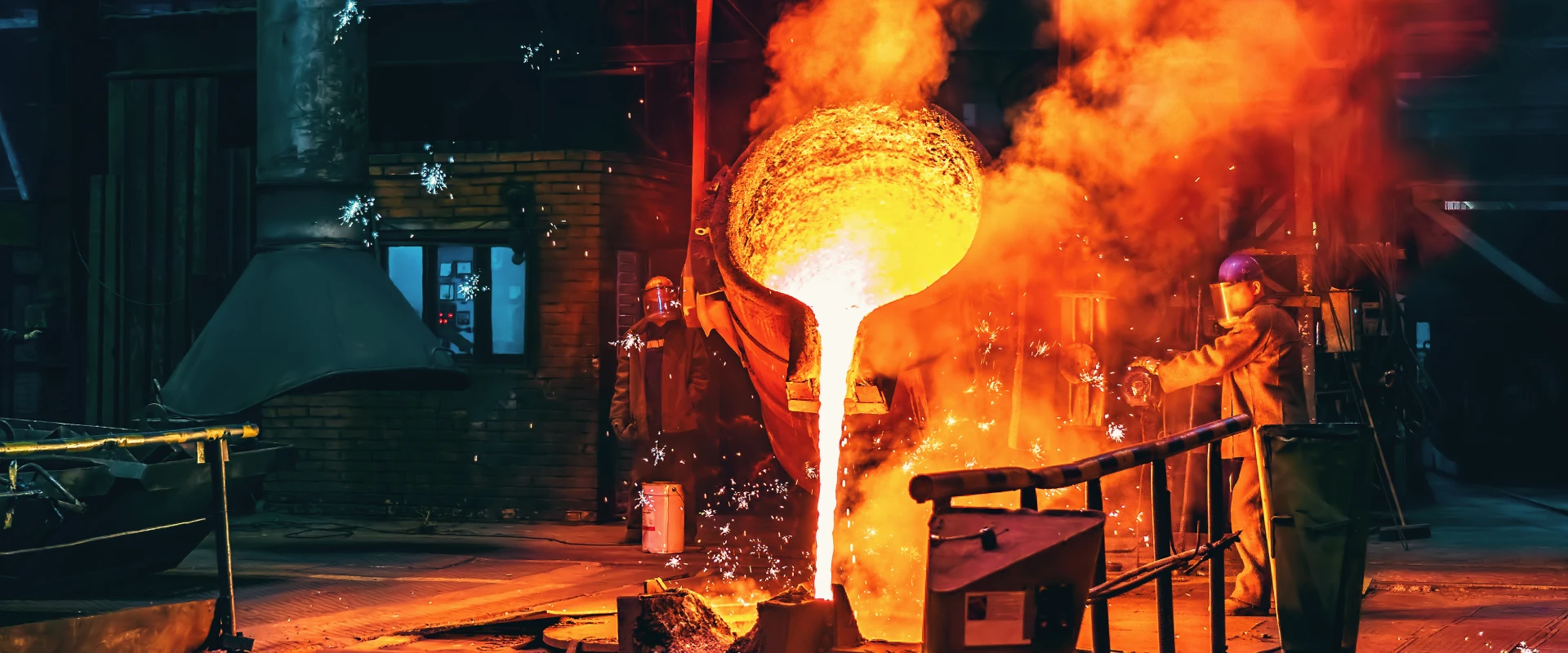Ferritic Stainless Steel: High-Temp Oxidation Resistance in Car Exhausts
Comparison of High-Temperature Oxidation Resistance of Ferritic Stainless Steels in Automotive Exhaust Systems
A car’s exhaust system endures a brutal daily workout. Hot gases—sometimes exceeding 900°C—rush through the pipes, manifolds, and catalytic converters, while road salt, water, and debris attack from the outside. For years, automakers relied on austenitic stainless steels (like 304 or 316) to handle these conditions, but their high nickel content makes them expensive. Enter ferritic stainless steels: a cheaper alternative with good strength and corrosion resistance. But not all ferritic stainless steels are created equal, especially when it comes to high-temperature oxidation—the process where metal reacts with oxygen at high heat, forming a layer of oxide that can flake off, weaken the metal, and eventually cause failure. Comparing how different ferritic grades hold up to this oxidation is key for choosing the right material for exhaust components. Let’s break down which ferritic stainless steels perform best, why, and what that means for your car’s exhaust system.
Why Ferritic Stainless Steels in Exhaust Systems?
Ferritic stainless steels are defined by their high chromium content (10.5–30%) and low nickel (usually less than 1%), which gives them a “ferritic” crystal structure. This makes them:
Cost-Effective: Without the expensive nickel in austenitic steels, ferritic grades can cost 20–30% less. For automakers producing millions of cars, this adds up to huge savings.
Heat Resistant: Their structure handles continuous high temperatures better than carbon steel, which rusts and weakens quickly in exhaust systems.
Formable: They bend and weld well, making them easy to shape into complex exhaust parts like manifolds and mufflers. “We switched to ferritic steel for our truck exhausts because it’s cheaper and still bends without cracking,” says a manufacturing engineer at a major automaker.
But their Achilles’ heel is high-temperature oxidation. When exposed to 600°C+ gases, the chromium in ferritic steel reacts with oxygen to form a protective chromium oxide layer (Cr₂O₃). If this layer is thick, uneven, or prone to flaking, the steel beneath will continue to oxidize, leading to thinning and eventual failure.
Key Ferritic Grades Used in Exhaust Systems
Automakers rely on several ferritic grades, each with different chromium and additive levels that affect oxidation resistance:
1. 409 Stainless Steel
The most common ferritic grade in exhausts, with 11–12% chromium and small amounts of titanium to stabilize carbides. It’s affordable but has limited high-temperature resistance:
Max Safe Temperature: About 650°C. Beyond this, the oxide layer thickens and starts to flake.
Best For: Mufflers and tailpipes, where temperatures are lower (300–500°C). “409 is our go-to for tailpipes,” says an exhaust system designer. “It’s cheap and lasts 5–7 years in most climates.”
2. 439 Stainless Steel
With 17% chromium and added titanium and niobium, 439 offers better oxidation resistance than 409:
Max Safe Temperature: Up to 800°C. The higher chromium forms a denser oxide layer, and the additives prevent grain boundary corrosion.
Best For: Exhaust manifolds and front pipes, where temperatures reach 600–750°C. A test by an auto parts supplier found 439 manifolds lasted 2x longer than 409 in high-heat conditions.
3. 441 Stainless Steel
A premium ferritic grade with 17–19% chromium, plus titanium and niobium. It’s designed for extreme heat:
Max Safe Temperature: 900°C. The extra chromium and stabilized microstructure keep the oxide layer intact even under prolonged high heat.
Best For: Turbocharger housings and close-coupled catalytic converters, where temperatures spike above 800°C. “We use 441 in our performance car exhausts,” notes a sports car engineer. “It handles the heat from turbochargers that would destroy 409 or 439.”
How Oxidation Resistance is Tested
To compare these grades, engineers use standardized tests that simulate exhaust system conditions:
1. Cyclic Oxidation Testing
Samples of each steel are heated to 800–900°C for hours, then cooled to room temperature—repeating the cycle 50–100 times. This mimics the daily heating and cooling of an exhaust system.
What’s Measured: Weight gain (from oxide formation) and how well the oxide layer adheres. A 441 sample might gain 5mg/cm² after 100 cycles, while 409 gains 15mg/cm²—significantly more oxidation.
Real-World Link: More weight gain means thicker, less stable oxide. In one test, 409 samples showed flaking oxide after 30 cycles, while 441 stayed intact for 100+.
2. Long-Term Isothermal Oxidation
Samples are held at a constant high temperature (e.g., 850°C) for 1.000+ hours. This tests resistance to prolonged heat, like in a car stuck in traffic on a hot day.
Results: 409 starts to show significant oxide spallation (flaking) after 500 hours. 439 lasts 800+ hours, and 441 can go 1.500+ hours with minimal damage. “This test tells us how long a part will last in hot climates,” says a materials tester.
3. Salt Spray + Heat Exposure
Combining high heat with salt spray simulates harsh winter conditions, where road salt accelerates oxidation.
Findings: 409 corrodes quickly in this test, with oxide and rust forming after 100 hours. 439 and 441 hold up better, thanks to their higher chromium, but 441 still outperforms 439 by 30% in rust resistance.
Real-World Performance: Which Grade Lasts Longest?
Field data from car owners and mechanics confirms the lab results:
409 Stainless Steel: Lasts 3–5 years in mild climates (no road salt, moderate temperatures). In snowy areas, it may rust through in 2–3 years. A survey of mechanics found 409 mufflers in northern U.S. states have a 50% failure rate by year 3.
439 Stainless Steel: Lasts 5–7 years in most climates. It handles road salt better than 409 and resists oxidation in hotter exhaust parts. A taxi fleet in Texas (hot temperatures, no salt) reports 439 manifolds lasting 6–8 years.
441 Stainless Steel: Lasts 8–12 years, even in harsh conditions. Performance car owners with turbocharged engines (high exhaust heat) say 441 components outlast 439 by 2–3x. “My 441 turbo manifold looks new after 80.000 miles,” says a car enthusiast. “The previous 439 one needed replacement at 30.000.”
Why Oxidation Resistance Saves Money
Choosing the right ferritic grade balances upfront cost and long-term durability:
409: Cheapest to buy (2–3 per kg) but needs frequent replacement. Over 10 years, a car with 409 exhaust parts might require 2–3 replacements, costing 400–600 total.
439: Costs 20% more upfront (2.5–3.5 per kg) but lasts twice as long. Total 10-year cost: 250–350—cheaper than 409 in the long run.
441: Most expensive upfront (4–5 per kg) but rarely needs replacement. Total 10-year cost: 150–250—best value for high-heat or harsh environments.
“ We used to spec 409 to save money,” says a fleet manager. “But replacing exhausts every 2 years was us costing more in labor. Now we use 439. and maintenance costs dropped by 40%.”
Factors That Hurt Oxidation Resistance
Even the best ferritic stainless steel can fail early if these factors are ignored:
Welding Without Protection: Welding ferritic steel without argon shielding can introduce oxygen, forming brittle oxide in the weld. This weakens the joint, making it prone to oxidation. A repair shop learned this when 441 exhausts they welded started failing at the joints within a year.
Poor Exhaust Design: Restrictions in the exhaust (like a clogged catalytic converter) trap heat, pushing temperatures above the steel’s limits. “We see 439 manifolds fail early in cars with aftermarket exhausts that restrict flow,” says a mechanic.
Mixing Metals: Connecting ferritic steel to austenitic steel (e.g., 304) creates galvanic corrosion, accelerating oxidation. All exhaust components should be the same type of stainless steel.
Future of Ferritic Stainless Steels in Exhausts
As cars become more efficient and electric hybrids gain popularity, exhaust temperatures are rising (due to smaller engines working harder), pushing demand for better ferritic grades:
New High-Chromium Alloys: Grades with 20–22% chromium are in testing, aiming to handle 950°C. Early results show they outperform 441 in oxidation resistance by 15%.
Additive Enhancements: Adding small amounts of aluminum (1–2%) to ferritic steel helps form a mixed oxide layer (Al₂O₃ + Cr₂O₃) that’s more stable than chromium oxide alone. A prototype 441+Al grade lasted 2.000 hours in isothermal tests.
Thinner Gauges: Better oxidation resistance lets automakers use thinner steel (1.2mm vs. 1.5mm), cutting weight and improving fuel efficiency. A 441 exhaust system can be 10% lighter than a 439 one with the same durability.
Why This Matters for Car Owners
Your car’s exhaust system does more than just reduce noise—it directs harmful gases away from the cabin and helps the engine run efficiently. A failed exhaust due to oxidation can cause:
Increased Emissions: Leaks let unfiltered gases escape, failing emissions tests.
Reduced Fuel Efficiency: Exhaust restrictions from oxide buildup force the engine to work harder, using more gas.
Safety Risks: Carbon monoxide leaks from a rusted exhaust can enter the cabin, causing health issues.
Choosing a car with 439 or 441 ferritic stainless steel exhaust components (check the owner’s manual or ask the dealer) can save you money and headaches down the road. As one mechanic puts it: “You pay a little more upfront, but you’ll never have to crawl under the car to replace a rusted-out muffler again.”
In the end, comparing the high-temperature oxidation resistance of ferritic stainless steels isn’t just about materials science—it’s about building cars that last. Whether you’re driving a economy car or a high-performance sports car, the right ferritic grade ensures your exhaust system can handle the heat, mile after mile.

